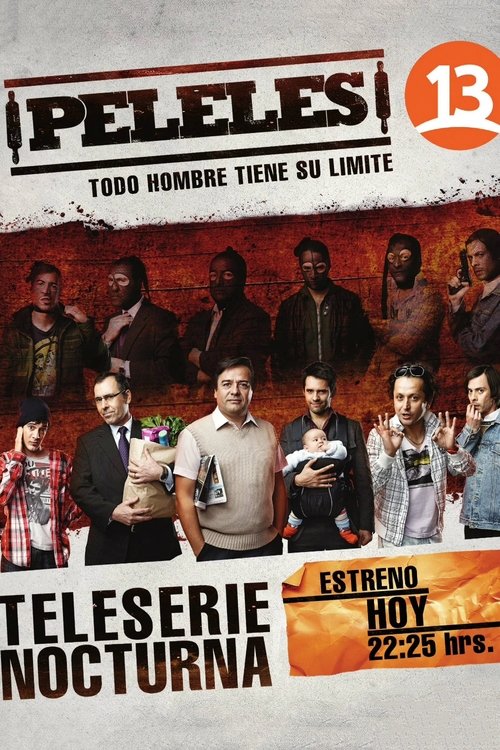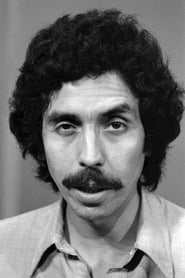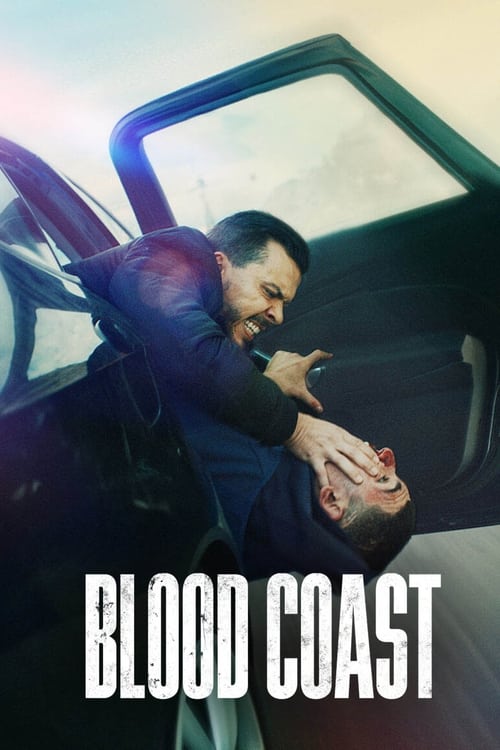
Ask Your Own Question
What is the plot?
In the pilot episode of "Pushovers," we are introduced to the main character, Jake, a down-on-his-luck private investigator struggling to make ends meet. He receives a mysterious phone call from a distressed woman named Sarah, who claims that her brother has gone missing under suspicious circumstances. Intrigued and desperate for a case, Jake agrees to meet her at a local diner. As he arrives, he notices Sarah's anxious demeanor and the way she glances around, suggesting she is being watched.
During their conversation, Sarah reveals that her brother, Tom, was involved in a shady business deal that went wrong. She believes that he may have crossed paths with a dangerous gang. Jake, sensing the urgency in her voice, decides to take on the case. He promises to help her find Tom, despite his own reservations about getting involved in something potentially dangerous. As they leave the diner, Jake notices a dark figure lurking outside, which heightens the tension.
The next day, Jake begins his investigation by visiting Tom's last known location, a rundown warehouse on the outskirts of town. As he explores the area, he discovers signs of a struggle, including a broken window and scattered belongings. While searching, he is confronted by a group of thugs who work for the gang Sarah mentioned. A tense confrontation ensues, where Jake uses his wits to escape, narrowly avoiding a physical altercation. This encounter solidifies his determination to find Tom and uncover the truth.
Jake returns to Sarah to share his findings. She is visibly shaken but grateful for his efforts. They discuss the possibility of involving the police, but Sarah is hesitant, fearing that it could put Tom in more danger. Instead, they decide to dig deeper into Tom's connections, leading them to a local bar known for its criminal clientele. At the bar, Jake and Sarah pose as a couple to gather information. They overhear a conversation about a recent deal gone wrong, which hints at Tom's involvement.
As they leave the bar, they are ambushed by the gang members who recognize them from the warehouse. A chase ensues through the dark alleyways of the city. Jake and Sarah manage to evade their pursuers by ducking into a nearby building. Inside, they find themselves in an abandoned office, where they discover documents that reveal the gang's operations and Tom's potential role in them. This discovery raises the stakes, as they realize that Tom may have been more involved than they initially thought.
Determined to rescue Tom, Jake and Sarah devise a plan to infiltrate the gang's hideout. They gather disguises and equipment, preparing for a confrontation. The night of the operation, they sneak into the hideout, which is heavily guarded. Using stealth and quick thinking, they navigate through the building, avoiding detection. They finally locate Tom, who is tied up and unconscious in a back room.
As they attempt to free him, they are caught by the gang leader, a menacing figure named Victor. A tense standoff occurs, where Jake tries to negotiate for Tom's release. Victor, however, is not interested in bargaining and orders his men to attack. A chaotic fight breaks out, with Jake and Sarah fighting for their lives. Jake showcases his skills, taking down several gang members, while Sarah manages to free Tom.
In the midst of the chaos, Tom regains consciousness and joins the fight, revealing that he has been planning to escape. Together, they manage to overpower the gang members, but Victor escapes, vowing revenge. The trio makes a narrow escape from the hideout, but not without injuries and emotional scars from the ordeal.
After the confrontation, Jake, Sarah, and Tom regroup at a safe location. Tom explains that he got involved with the gang out of desperation, but he never intended for things to escalate. Sarah expresses her relief at having her brother back, but also her anger at his choices. Jake, feeling a sense of responsibility, reassures them that they will figure things out together.
In the final scenes, Jake reflects on the case and the dangers of the world he has stepped into. He receives a threatening message from Victor, indicating that the conflict is far from over. The episode ends with Jake, Sarah, and Tom preparing for the challenges ahead, united by their shared experience but aware of the looming threat that still hangs over them.
What is the ending?
In the ending of "Pushovers," the main characters confront their personal demons and the consequences of their actions. The story culminates in a tense showdown that forces each character to make pivotal choices that define their futures.
As the final scenes unfold, we see the characters grappling with their relationships and the impact of their decisions. The resolution brings a mix of hope and uncertainty, leaving the audience to ponder the characters' paths moving forward.
The final act of "Pushovers" begins with a palpable tension in the air as the main characters gather at a local diner, a familiar setting that has served as a backdrop for many of their interactions throughout the series. The diner, with its flickering neon lights and worn-out booths, feels like a character in itself, embodying the weight of their shared history.
Scene 1: The Confrontation As the characters sit around a table, the atmosphere is thick with unspoken words. Sarah, visibly anxious, fidgets with her coffee cup, her mind racing with the implications of the choices she has made. Across from her, Jake leans back, arms crossed, his expression a mix of defiance and vulnerability. He knows that the decisions they face could change everything. The tension escalates when Mark, the group's unofficial leader, speaks up, urging them to confront the issues that have been simmering beneath the surface. His voice is steady, but there's an underlying desperation as he implores them to take responsibility for their actions.
Scene 2: The Emotional Reckoning As the conversation unfolds, each character reveals their fears and regrets. Sarah admits to feeling lost and overwhelmed, her voice trembling as she recounts the mistakes that have led them to this moment. Jake, who has always been the jokester, surprises everyone by sharing his own insecurities, his facade cracking as he admits he feels like a failure. Mark, trying to maintain control, struggles with his own guilt over decisions that have hurt those he cares about. The diner, once a place of comfort, now feels like a pressure cooker, amplifying their emotional turmoil.
Scene 3: The Decision The climax arrives when they must decide whether to take a leap of faith and support each other in a new venture that could either save or destroy their friendships. The stakes are high, and the weight of their past decisions looms large. After a heated debate, they reach a consensus, albeit reluctantly. They agree to take a risk together, symbolizing their commitment to one another despite the uncertainty of the outcome.
Scene 4: The Aftermath As they leave the diner, the sun begins to rise, casting a warm glow over the city. This moment signifies a new beginning, but it is tinged with the knowledge that their journey is far from over. Each character walks away with a sense of hope mixed with trepidation. Sarah feels a flicker of determination, ready to face her challenges head-on. Jake, though still uncertain, finds solace in the support of his friends. Mark, burdened yet relieved, understands that leadership comes with its own set of trials.
Scene 5: The Final Reflection In the closing moments, the camera pans out, capturing the group as they walk down the street together, their silhouettes framed against the rising sun. The audience is left with a sense of ambiguity about their future, but also a feeling of resilience. Each character has faced their fears and made choices that will shape their lives moving forward, leaving viewers to reflect on the complexities of friendship, responsibility, and the courage it takes to embrace change.
In the end, Sarah, Jake, and Mark each embark on their individual journeys, but they do so with a renewed sense of purpose and a commitment to support one another, no matter what challenges lie ahead.
Is there a post-credit scene?
In the 2011 TV show "Pushovers," there is indeed a post-credit scene that adds a humorous twist to the series finale. After the credits roll, the scene opens in a dimly lit diner, where the main characters, a group of misfit friends, are gathered around a booth, sharing a late-night meal. The atmosphere is filled with the sounds of clinking cutlery and soft chatter, creating a cozy yet chaotic vibe.
As the camera pans across the table, we see each character displaying their unique quirks: one is obsessively counting the number of fries on their plate, while another is animatedly recounting a wild story from their past. The laughter and camaraderie are palpable, showcasing the bond they've formed throughout the series.
Suddenly, the door swings open, and a new character enters--a mysterious figure dressed in a trench coat and sunglasses, despite the late hour. The friends pause, exchanging curious glances. The figure approaches their table, and with a dramatic flair, removes their sunglasses, revealing a familiar face from earlier in the series--a character who had been presumed gone for good.
The friends erupt in a mix of shock and joy, with one character exclaiming, "We thought you were gone for good!" The returning character smirks and replies, "You can't get rid of me that easily." This moment encapsulates the show's themes of friendship and resilience, leaving viewers with a sense of hope and the promise of more adventures to come, even if they are left to the imagination.
The scene fades out with the group laughing and teasing each other, reinforcing the idea that no matter the challenges they face, they will always have each other's backs. This light-hearted conclusion serves as a fitting end to the series, leaving fans with a warm feeling and a smile.
What motivates the main character, Jake, to become involved in the underground world of pushers?
Jake, a struggling artist, is initially motivated by financial desperation and the desire to escape his mundane life. His passion for art is overshadowed by his mounting debts, leading him to make morally questionable decisions. As he delves deeper into the underground scene, he becomes increasingly conflicted, torn between his artistic integrity and the allure of quick money.
How does the relationship between Jake and his mentor, Leo, evolve throughout the series?
Jake's relationship with Leo begins as one of admiration and guidance, with Leo serving as a father figure who introduces Jake to the world of pushers. However, as Jake becomes more entrenched in this lifestyle, he starts to see Leo's darker side, leading to tension and betrayal. Their dynamic shifts from mentor-mentee to adversaries, culminating in a dramatic confrontation that forces Jake to reassess his values.
What role does the character Mia play in Jake's journey, and how does their relationship impact the plot?
Mia is introduced as a free-spirited woman who becomes Jake's love interest. Her carefree attitude and artistic passion initially inspire Jake, providing him with a glimpse of the life he desires. However, as Jake's involvement in the underground world deepens, Mia becomes a source of conflict, as she represents the life he is abandoning. Their relationship is tested by Jake's choices, ultimately leading to a heartbreaking decision that propels Jake further into the darkness.
What are the consequences of Jake's actions in the underground pushing scene, particularly regarding his friendships?
Jake's descent into the pushing scene leads to significant consequences for his friendships. His best friend, Tom, initially supports Jake but grows increasingly concerned about his choices. As Jake becomes more involved, he alienates Tom, who ultimately confronts him about the dangers of their lifestyle. This confrontation serves as a pivotal moment, highlighting the strain on their friendship and forcing Jake to confront the reality of his decisions.
How does the series depict the theme of betrayal, particularly in the context of Jake's relationships?
Betrayal is a recurring theme in 'Pushovers,' particularly through Jake's relationships with Leo and Mia. Jake's trust in Leo is shattered when he discovers Leo's manipulative nature, leading to a climactic betrayal that alters their dynamic. Similarly, Jake's choices lead to a betrayal of Mia's trust, as he prioritizes his involvement in the pushing scene over their relationship. These betrayals serve to illustrate the moral complexities of Jake's journey and the impact of his decisions on those around him.
Is this family friendly?
"Pushovers," produced in 2011, is a drama that explores complex family dynamics and personal struggles. While it does contain moments of emotional depth and tension, it is generally suitable for a mature audience rather than young children.
Potentially objectionable or upsetting aspects include:
-
Family Conflict: The show features intense arguments and emotional confrontations between family members, which may be distressing for sensitive viewers.
-
Themes of Loss: There are scenes that deal with grief and loss, portraying characters coping with the death of loved ones, which could be upsetting.
-
Substance Abuse: Some characters struggle with addiction, leading to scenes that depict the consequences of substance abuse, which may be inappropriate for younger audiences.
-
Mental Health Issues: The show addresses mental health challenges, including depression and anxiety, which are portrayed in a serious manner that might be triggering for some viewers.
-
Dramatic Tension: There are moments of high emotional stakes and tension that could be overwhelming, particularly for younger viewers or those sensitive to conflict.
Overall, while "Pushovers" offers valuable insights into family relationships, its themes and emotional intensity may not be suitable for children or those who are particularly sensitive to such topics.

























